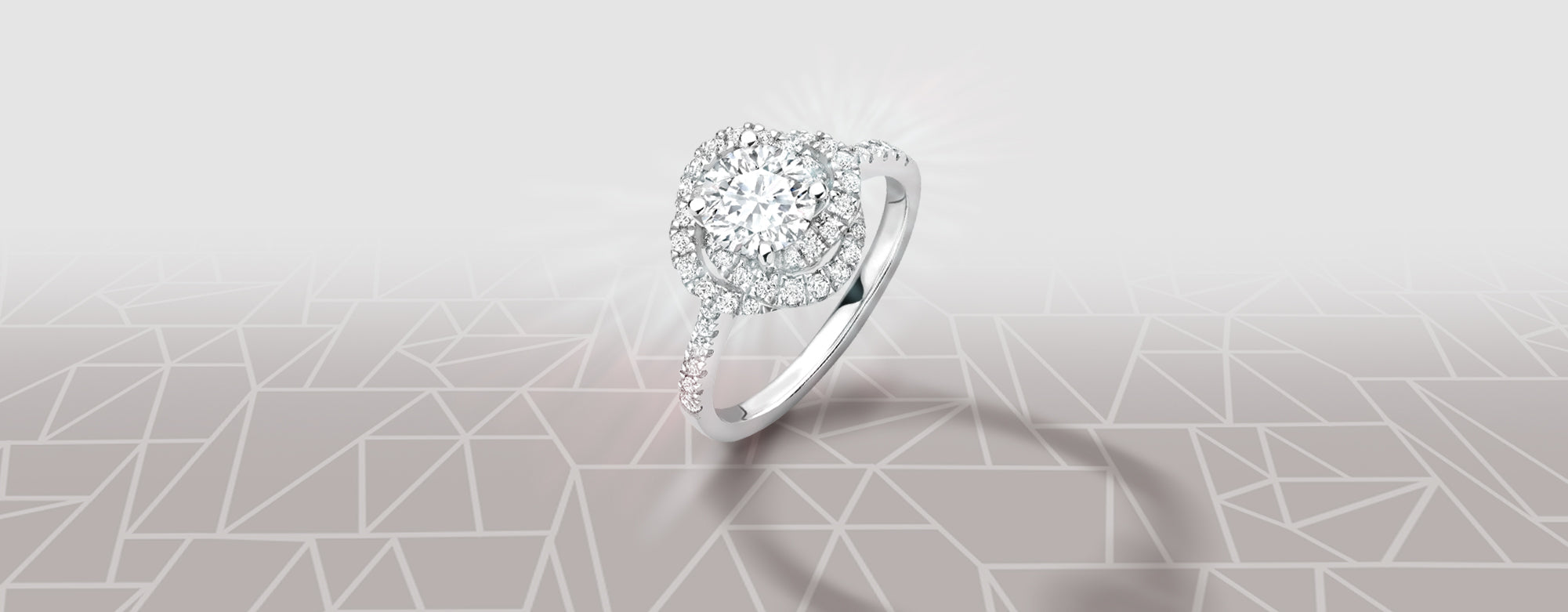
The 4 C's to Consider When Buying a Diamond Ring
A common misconception is that the main factor that determines a diamond's value is its carat weight.
Every diamond is unique, but in order to assess a diamond's quality and rarity, jewellery professionals must be able to compare one diamond to another. This is done using the grading system developed by the Gemological Institute of America (GIA) in the 1950s, which is now the industry's most widely accepted system, worldwide. It established the use of four important factors to describe and classify diamonds: Clarity, Color, Cut, and Carat Weight.
Following the guidelines of these 4 C’s will help you to select a diamond that radiates with Fire and Brilliance.
Our award-winning team of experts are always happy to educate you when you come and visit us in store, but if you’d like to have some diamond knowledge ahead of your visit, please read ahead.
1. Carat Weight
A diamond's weight is measured in 'carats’ and one metric carat is equal to 200 milligrams. Put simply, the higher the carat weight, the heavier the diamond.
This should not be confused for the size of the diamond, as these can vary due to cut quality, which is one of the 4 C's we will discuss later.
Carat weight can therefore appear differently across difference diamond shapes such as round brilliant, princess, pear, oval, cushion, marquise, emerald, radiant or heart.

Sizes are shown for proportionality purposes. Images do not reflect actual carat size.
2. Colour
For diamonds, colour actually means lack of colour. The clearer or more colourless a diamond is, the higher its value. As many diamonds in nature can have a slight yellow tint, diamonds that are colourless or close to it, are also rarer.
The GIA colour grading scale categorises a diamond's colour on a scale from D - Z.

D is the best quality, and diamonds yellow in colour as you go further along the scale. Colourless or clear white diamonds are more desirable as they allow the most refraction of light or sparkle. Brown or yellow-hued diamonds at the Z end of the spectrum are deemed the lowest quality in terms of colour.
Fancy diamonds are diamonds that exhibit other colours which are not on the D- Z scale, as well as stones with a yellow intensity beyond Z. These diamonds come in tones of naturally saturated reds, pinks, blues, and greens, and are the rarest and most valuable.
At Jewellery Quarter Diamonds, our stock predominantly contains diamonds within the D-H range. However, we are happy to source and design diamonds of any colour, within the D-Z scale, and beyond.
3. Clarity
The organic process through which diamonds are formed means that small crystals can be trapped within a diamond while it's forming, which then causes the diamond to contain tiny flaws.
Clarity refers to the purity and rarity of the stone, and the presence (or absence) of these flaws within the stone.
Internal flaws are referred to as inclusions, while external flaws are called blemishes. The size, position and visibility of these flaws can have a significant impact on diamond clarity.
Diamond clarity is graded by the visibility of these inclusions under 10-power magnification.
Our jewellers and gemologists use a scale developed by the GIA which ranges from from FL (flawless) to I (included), with number gradations for each category, to rate clarity.

A diamond with poor clarity will have multiple inclusions and external blemishes, which will affect the way the diamond reflects light and as a result, affect the diamond's sparkle.
The higher a diamond's clarity score, the fewer imperfections the diamond has.
Diamond clarity is ranked on a scale from FL, which indicates a flawless diamond, to I, which indicates a number of more significant inclusions and blemishes.
4. Cut
Diamond cut refers to how well a diamond is cut and polished, and diamond cutting is the process is turning the original rough stone into a faceted one. The best diamond cut is perfectly proportioned, symmetrical and beautifully polished so that the highest amount of light can enter and reflect out of the stone.

A rough, uncut diamond. Source: RHJ, Getty Images/Canva.
A well-cut diamond will appear sparkly and bright, while a poorly cut diamond will appear dull and lack-lustre.

The higher the grade, the more fire and scintillation your diamond will have.
As a result, a larger diamond with a higher colour score that is poorly cut can potentially be less valuable than a smaller diamond with less clarity.
At JQ Diamonds, every diamond is put through our rigorous multi-step Quality Check process. Only once our production experts and award-winning team have examined each ring and are satisfied with its perfection are we happy to allow it to be sold. This precision and attention to detail is what sets Jewellery Quarter Diamonds apart.



